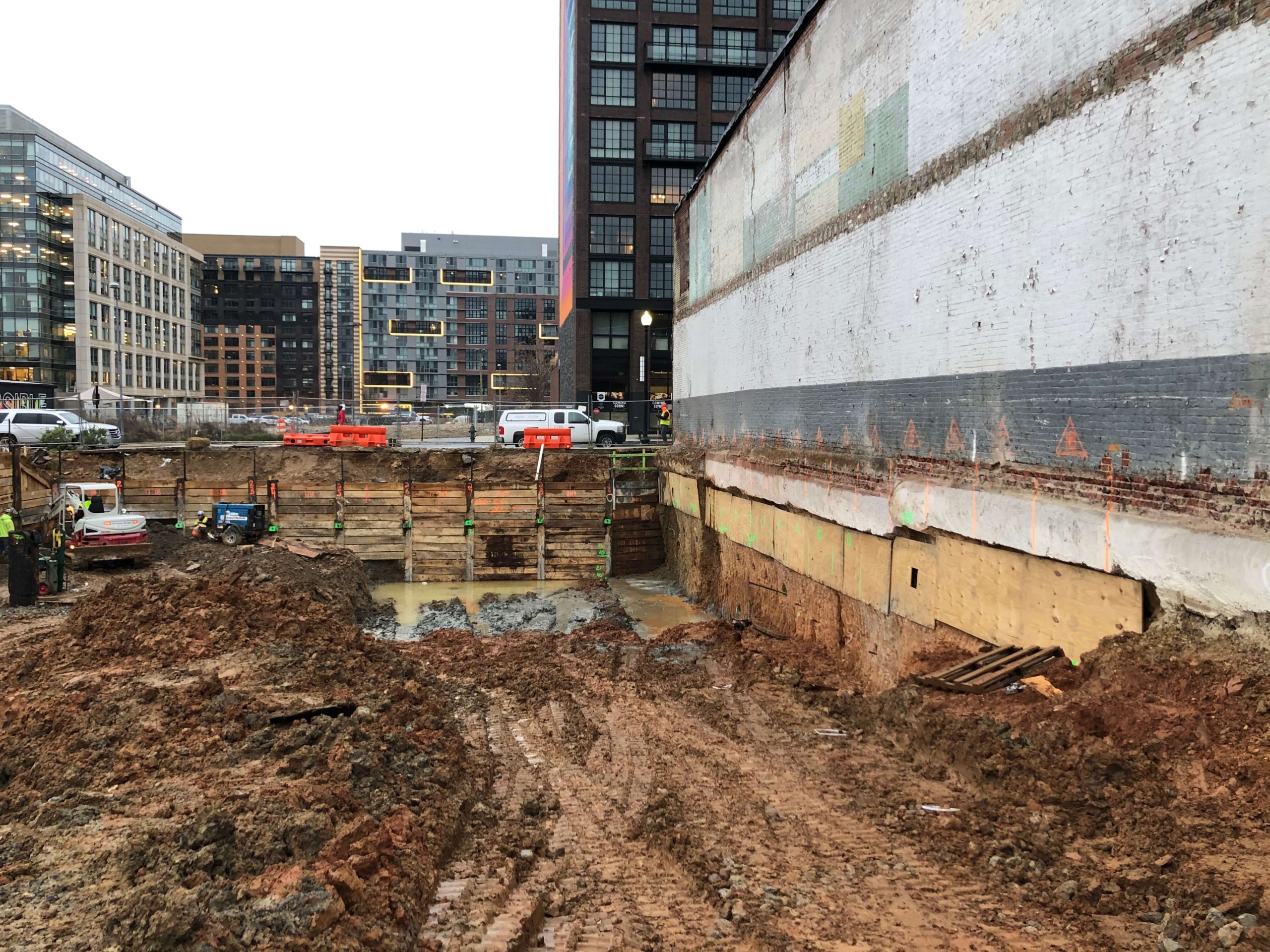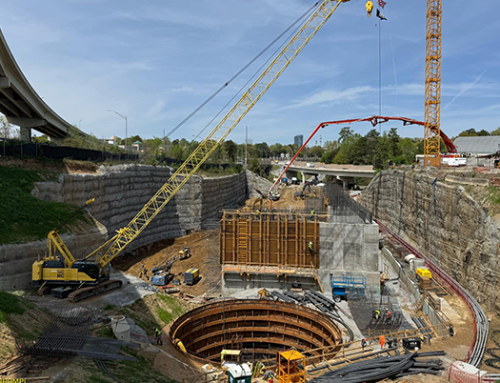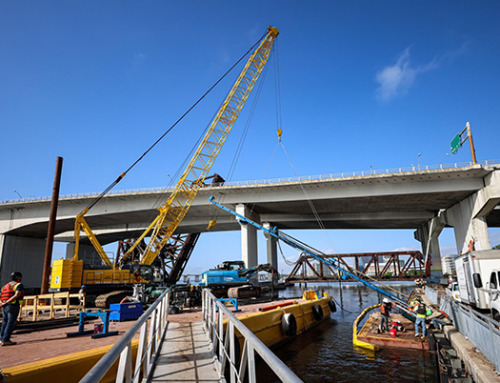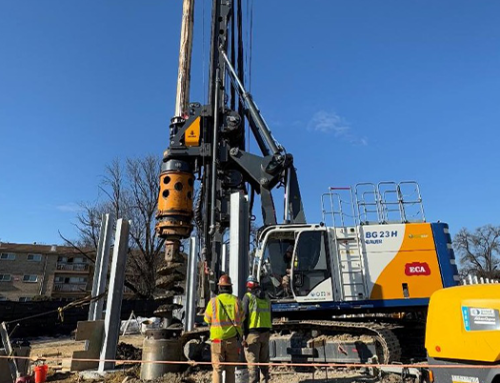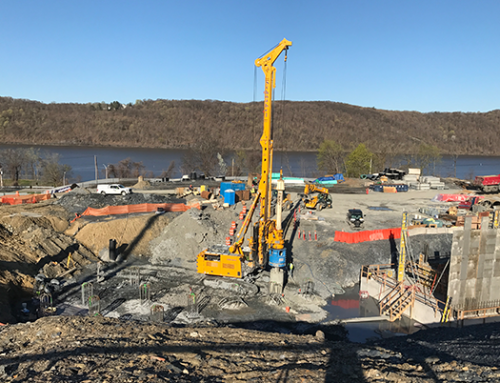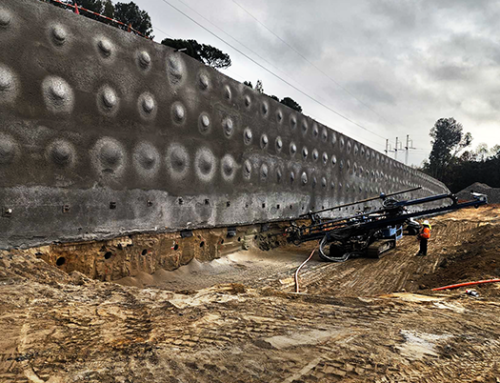Tribeca Condos | Washington D.C.
State: Washington D.C
Owner: UIP Asset Management, Inc.
General Contractor: UIP Asset Management, Inc.
Project Description:
The Tribeca Condos project in Washington, DC was a 13 level above-grade residential structure with a partial below-grade level. Schnabel was hired by the project’s general contractor, UIP General Contracting, Inc., to perform the earth retention on this project. The work consisted of drilled soldier piles, hollow-core bar tiebacks/soil nails, and soil mix pier underpinning. Like many earth retention projects in Washington, DC,
the earth retention for this project was on wall line. On the west side of the site, there was a 100+ year old existing 2-story brick building, which needed to be supported to achieve subgrade for the proposed Tribeca Condos structure. To achieve subgrade and not interfere with the proposed construction, Schnabel needed to underpin the adjacent brick building anywhere from 3ft to 20ft below the bottom of footing. The soil mix pier
underpinning method was used to underpin the building.
The use of the Soil Mix Pier Underpinning (SMPU) method made sense for this project. The adjacent brick building did not have a concrete reinforced footing; therefore, the use of traditional underpinning would have been risky and dangerous. Soil Mix Pier Underpinning (SMPU) provided an alternate method to underpin the building, without having to put anyone underneath the footing. This method proved to be effective and allowed Schnabel to install more than 40 LF of underpinning a day on several occasions.
This project presented a variety of challenges while installing the soil mix underpinning piers. The main challenge was installing piers deeper than 12ft in a single lift. The below-grade soil conditions consisted of clayey FILL material, which made it difficult to create a homogeneous soil-cement mixture, and the CAT 313 excavator did not have enough hydraulic flow to mix the soil and cement effectively. Any pier greater than 12ft
deep had to be installed in two lifts. The challenges Schnabel faced on this project provided valuable lessons that can be used on future projects.
